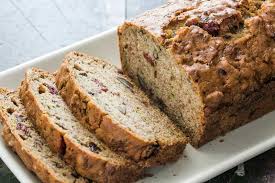Tea is Served
Main Tea Groups

Black Tea
Black teas are perhaps the most common on the market. Darjeeling, Assam, Ceylon, and Keemun are a few of the most well-known. These teas are heavily oxidized and brew up strong, bold, and often malty.

Green Tea
Green teas require more steps to process than white teas, but less oxidation takes place, which is why the leaf itself remains green. Two main methods yield green tea: steaming and pan-firing. Japanese green teas that are steamed tend to be brighter and more vibrant in color compared to pan-fired teas. Steaming, not a better method, just produces a different type of green tea. Popular Japanese greens include Sencha and Genmaicha.

Oolong Tea
Oolong is a semi-oxidized tea, the most complex type of tea to produce. These teas require numerous steps to produce, and leaves are usually rolled or balled up. A great oolong can be steeped eight or so times, each steep releasing a new dimension of flavour. As a general rule, the higher the tea’s oxidation level, the more steps involved in the process. Famous oolongs include Baozhong, Da Hong Pao, and Jin Xuan.

Pu’erh Tea
Pu’erh is a fermented style of tea from the Yunnan province in China. Two styles: sheng/raw and shou/cooked. (The latter involves a process that encourages faster fermentation.) After the leaves are oxidized, a small amount of moisture is left, and the leaves are then aged for months or years.

Tea Leaf
Tea is harvested by hand, not all leaves are picked during harvesting but only a few top young and juicy leaves with a portion of the stem on which they have grown and the so-called bud (or tip) – an unexpanded leaf at the end of the shoot. A few leaves, part of the stem and a tip are called “flush”.

White Tea
These teas are subtle in flavor, very delicate and elegant on the tongue, and the leaves undergo the least amount of processing. Leaves are picked, withered (oxidation takes place), and dried. The finished tea leaves are a soft grey color, consisting only of the bud and two top leaves from the shoot of the plant. Popular white teas include Silver Needle and Bai Mudan.

Lapsang Souchong
Pu’erh is a fermented style of tea from the Yunnan province in China. Two styles: sheng/raw and shou/cooked. (The latter involves a process that encourages faster fermentation.) After the leaves are oxidized, a small amount of moisture is left, and the leaves are then aged for months or years.

Royal Moroccan Tea
The tea is loose-leaf Chinese gunpowder green, with its tight, granular roll. To that Moroccans add sugar, skip the milk, and stuff generous handfuls of fresh herbs into the teapot. Mint is key. The area around Meknes, the imperial capital during Moulay Ismail’s reign, produces the country’s most vibrant mint.

Earl Grey Tea
Earl Grey tea is a tea blend which has been flavoured with the addition of oil of bergamot. Bergamot is a variety of orange that is often grown in Italy and France. The rind’s fragrant oil is added to black tea to give Earl Grey its signature pungent punch. Traditionally, Earl Grey was made from black teas, but tea companies have since begun to offer Earl Grey in other varieties as well, such as green or oolong.
Herbal Teas

Flavor Profile: has a bold, vegetal flavor.
ROOIBOS TEA, or African Red Tea, comes from the South African Red Bush, and the leaves are ground and bruised before they’re fermented and dried. Green rooibos tea doesn’t go through an oxidation/fermentation process and has a lighter flavour.
Flavour profile: naturally sweet, and can have warm, nutty, or vanilla tones.

Flavour Profile: often has a delicate flavour that can be vegetal, naturally sweet, citrus-like, floral, minty, or spicy depending on the variety and blend of ingredients.
MATCHA TEA is made by grinding up green tea leaves into a powder, which is whisked together with a small amount of water. You ingest the whole leaf, which makes this variety extremely healthy, and it’s especially popular in Japanese tea ceremonies.
Flavor Profile: has a grassy, vegetal flavor.







